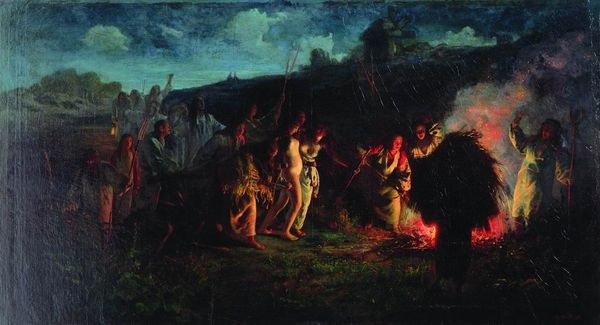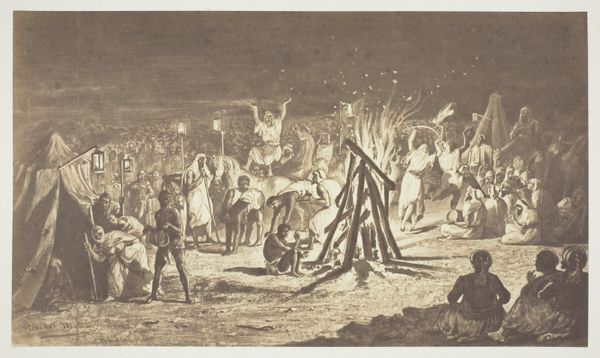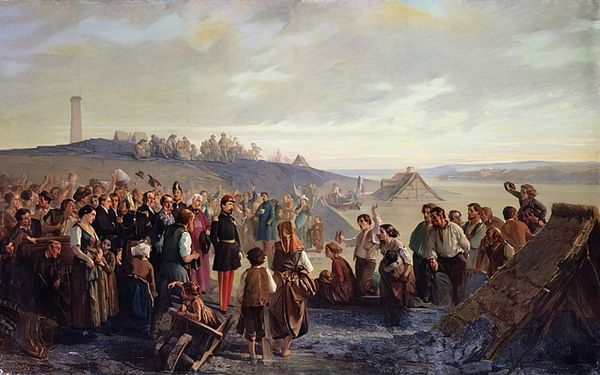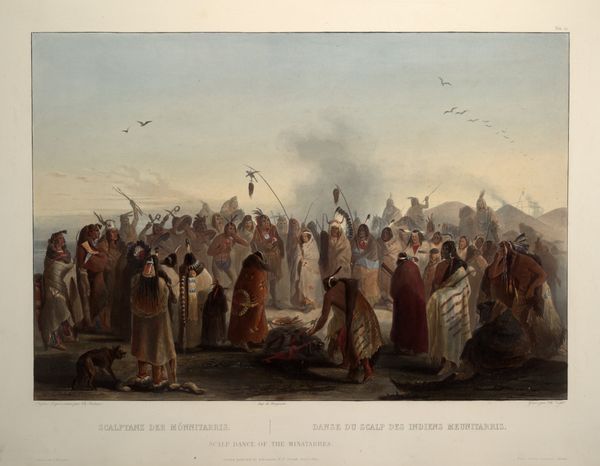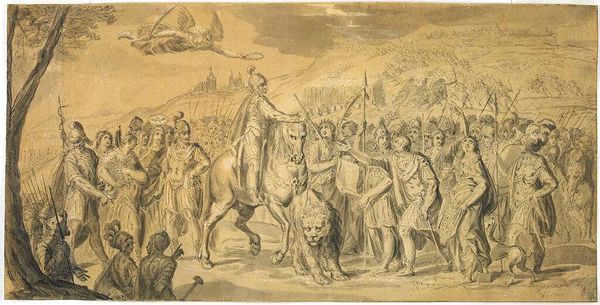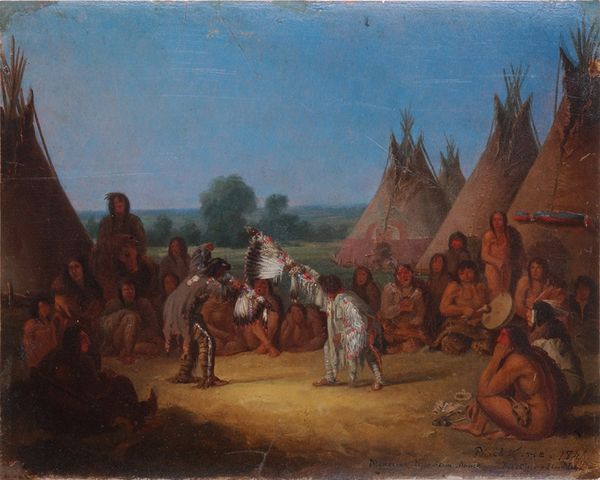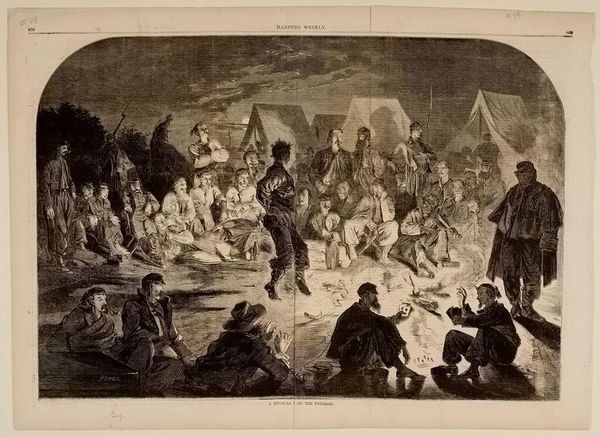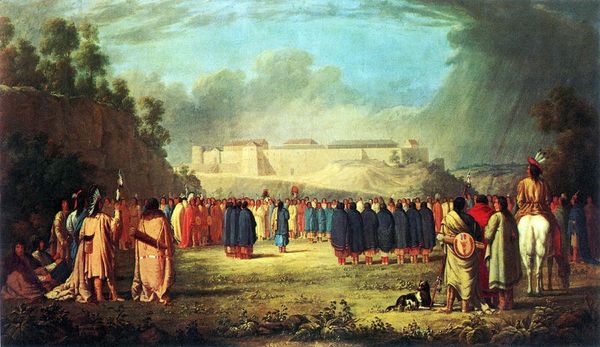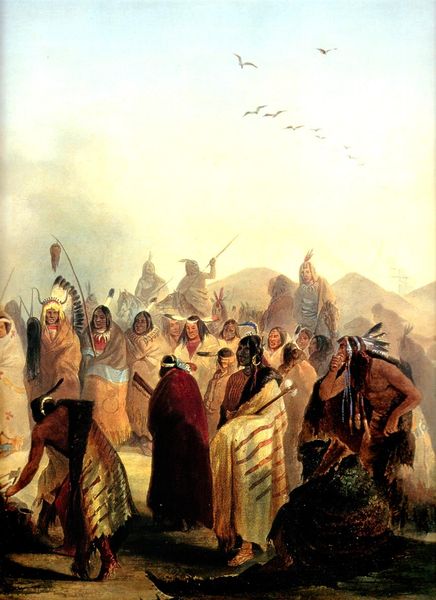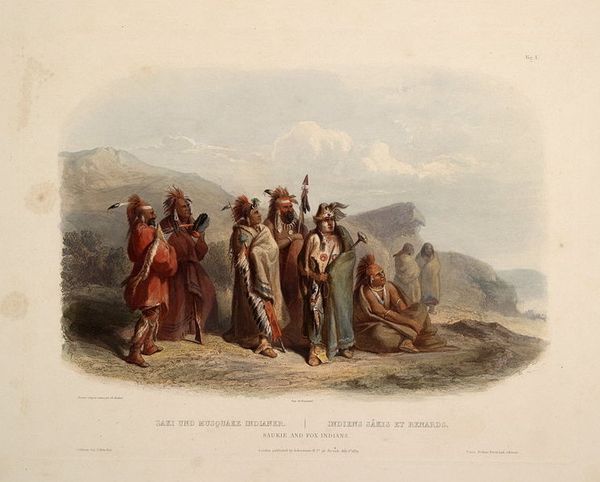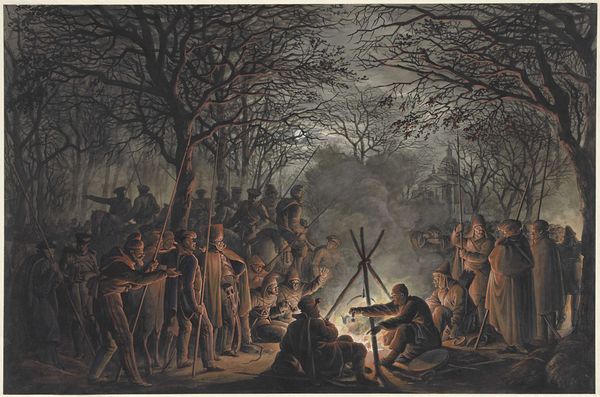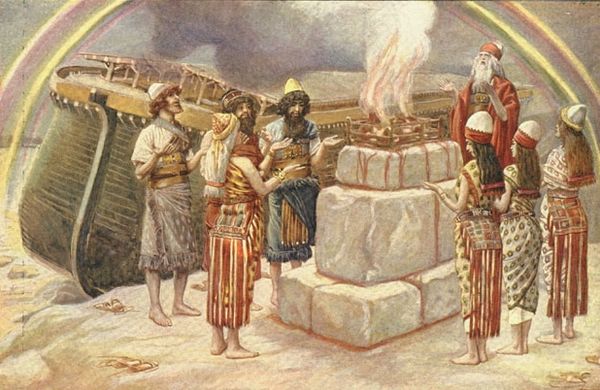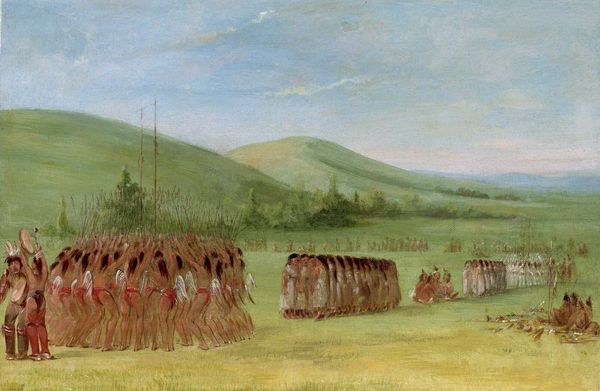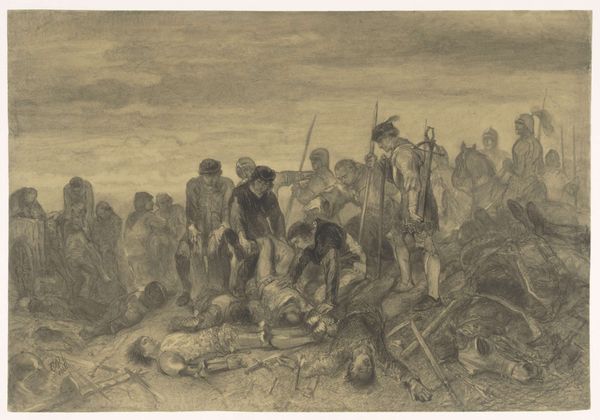
Copyright: Public domain
Paul Kane painted "Scalp Dance by the Chualpays Indians," capturing a scene bathed in the warm glow of firelight. The painting’s composition draws us to the figures arranged in a semi-circle around a central fire. Notice how Kane uses light and shadow to define forms, creating a sense of depth and drama. The fire casts long shadows, heightening the emotional intensity of the scene. The formal organization is hierarchical, with the central figures more detailed and brightly lit, which draws attention to their significance within the ceremony. The painting's structure destabilizes established meanings through its depiction of indigenous ritual. Kane uses visual language to reflect broader cultural and historical contexts, engaging with questions of representation and power. The semiotic system, visible in clothing and artifacts, allows the image to communicate cultural codes. The painting functions aesthetically and contributes to a larger cultural dialogue. The dynamic interplay between light and shadow embodies the complex relationship between representation, perception, and cultural interpretation.
Comments
No comments
Be the first to comment and join the conversation on the ultimate creative platform.
